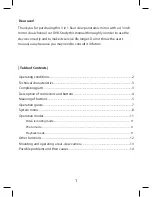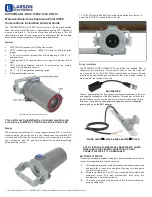
Piranha ES-xx User Manual
03-032-20070-02
Teledyne DALSA
60
How to Perform Flat Field Correction
Set up the camera operating environment
(i.e. line rate, CCD shift direcion, exposure,
offset, gain, etc.)
Set the calibration sample size using
the command css
Perform FPN correction. FPN correction
should be performed before PRNU correction.
Perform PRNU correction
1. Stop all light from entering the camera. (Tip: Cover lens with a lens cap.)
2. Verify that the output signal level is within range by issuing the command
or
. If there are too many zeros in the output data (more than 6.25%
of output data within the roi) , increase the analog offset (
) or use the
automated algorithm
. If the average of the pixels is more than 25%
of the maximum signal swing, ensure that no light is entering the camera and
reduce the analog offset or gain level (
).
3. Issue the command
. The camera will respond with OK> if no error occurs.
FPN correction automatically calibrates FPN coefficients.
4. After the correction is complete, you must save these settings to non-volatile
memory so they will be remembered and be reusable. To do so, issue the
commands
where is the coefficient set to save and
.
Forward and reverse direction settings are stored separately and coefficients must
be saved before switching direction.
5. If you will be operating the camera in the opposite camera shift direction,
repeat steps 2 through 4 after changing direction.
6. To verify output, enable the FPN coefficients using the command
.
You should see close to zero output.
gl
gla
sao
cao
sag
ccf
wfc
wus
epc 1 0
t i
i
i
1. Place a white reference in front of the camera and remove lens cap.
2. Verify that the output signal level is within range by issuing the command
or
. If the signal level is too low, adjust the analog gain (
) or use the
automated algorithm
.
DALSA recommends a target value of about 80% of maximum signal swing
per tap. If you change the gain, FPN coefficients should be recalculated.
3. Issue the command
or
where i is equal to or greater than the maximum
pixel in the image. The camera will respond with OK> if no error occurs.
4.
6
gl
gla
sag
ccg 0
ccp
cpa 2
i i
i
After the correction is complete, you must save these settings to non-volatile
memory so they will be remembered and be reusable. To do so, issue the
commands
where is the coefficient set to save and
.
Forward and reverse direction settings are stored separately and coefficients must
be saved before switching direction.
5. If you will be operating the camera in the opposite camera shift direction,
repeat steps 2 through 4 after changing direction.
. Enable the coefficients using the command,
. You should see a flat line
with a couple of DN peak to peak residual patterns. It is necessary to average
many lines to see the residual FPN/PRNU.
wpc
wus
epc 1 1
i
i
Perform PRNU correction next to determine the multiplication
factors required to bring each pixel to the required value (balance target) for
flat, white output.
Set the region of interest to include all
of the image’s pixels of importance using
the command roi x1 y1 x2 y2.
1
2
3
4
5
Содержание Piranha ES Series
Страница 22: ...Piranha ES xx User Manual 03 032 20070 02 Teledyne DALSA 22 ...
Страница 88: ...Piranha ES xx User Manual 03 032 20070 02 Teledyne DALSA 88 ...
Страница 102: ...Piranha ES xx User Manual 03 032 20070 02 Teledyne DALSA 102 ...
Страница 104: ...Piranha ES xx User Manual 03 032 20070 02 Teledyne DALSA 104 ...
















































